Gratitude: I’m always grateful for having so many choices.
Whether it is carving wood, making boxes, creating websites, or building boats, I have so many choices that things sometimes get set aside.
My original article about this clock was 3 and 1/2 years ago. The clock has a mechanical movement, one that is fine enough to be categorized as a “regulator.” In the age of mechanical movements, regulators were used as reference sources for setting other clocks. Building a regulator clock is a “bucket list” project for me. I watched the clock catalogs as fine, robust mechanical movements faded away, being replaced by quartz crystals and cheap Chinese plastic. The very few fine brass mechanical movements still being produced are becoming ever more expensive. So, I grabbed one a few years ago before the price became stratospheric. Once I acquired the mechanical movement, I roughed out some cherry lumber and set the project aside.
Now, I’m getting back to it. The cherry lumber is well acclimated. I still have the original drawings, 8 large sheets. The movement and other parts are still in their original boxes waiting to go to work.
Most of it will be built according to plan, except… I’m a woodcarver and wanted more carving detail than the original plan. More than the original, but not as much as the baroque Vienna Regulators. I have redrawn the stack of top moldings, replacing the dentil molding with egg and dart.
This is where we come to eating dessert first. The moldings will be the most fun because making them is building new skills. So, moldings are the dessert I’m eating first, especially the egg and dart. Then, the other molding profiles, and lastly the case. About half of the moldings are directly on the edges of parts of the case, on boards. The rest are on sticks that wrap around the case. Let’s start with the sticks. To get to the desired dimensions, a couple of them are laminated. I glued them up long ago with hide glue and have oriented the profiles to avoid exposing join lines. (click photo to enlarge.)
Now for the most fun, the egg and dart. Prepping the wood for the egg and dart is relatively easy. It is basically a stick with one corner rounded over. After 4-squaring the stick, a #9 hollow does most of the work. I added extra shadow lines along the top and bottom of the egg and dart pattern by first using a marking gauge and then deepening those marking lines with a rebate plane tilted about 45 degrees. A pair of dividers and a plastic pattern (Thank You Mary May) helps with laying out the carving pattern.
After that, it’s a simple matter of carving. Well…. my carving bench doesn’t hold a 40 inch work piece. The answer is a pair of vee-blocks and some creative clamping. The last picture in this episode is of a practice piece. It has promise and I learned from it.
Other articles in this series…
- Regulator Clock – Done
- Regulator Clock – Woodworking completed
- Regulator Clock – Scratching the frames
- Regulator Clock – Door Hinged
- Regulator Clock – Case Dry Fitted
- Regulator Clock – Jelly Side Down
- Regulator Clock – Case Frames – 2
- Regulator Clock – Glass – 2
- Regulator Clock – Case Frames – 1
- Regulator Clock – The Works work
- Regulator Clock – Glass
- Regulator Clock – Tongue & Groove planes
- Regulator Clock – Completed Mouldings
- Regulator Clock – Stick Mouldings
- Regulator Clock – Plate Mouldings
- Regulator Clock – Egg and Dart Moulding
- Regulator Clock – Eat Dessert First
- Regulator Clock – original description
- Regulator Clock – Stock Prep
- Regulator Clock – Plans for Moldings
- Taming the Rabbet
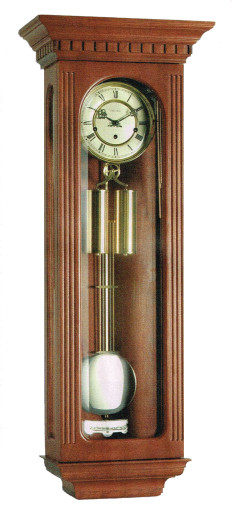
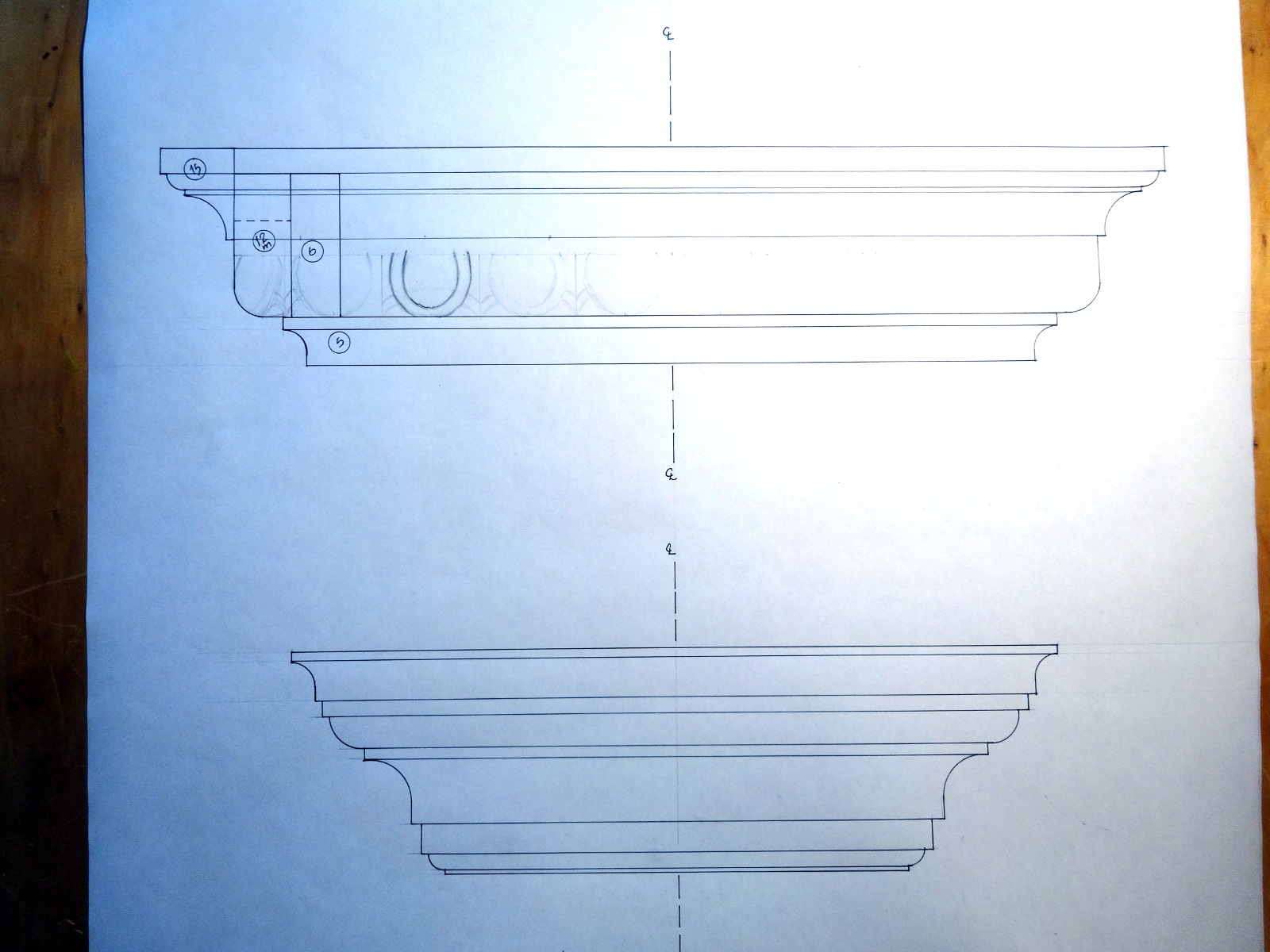
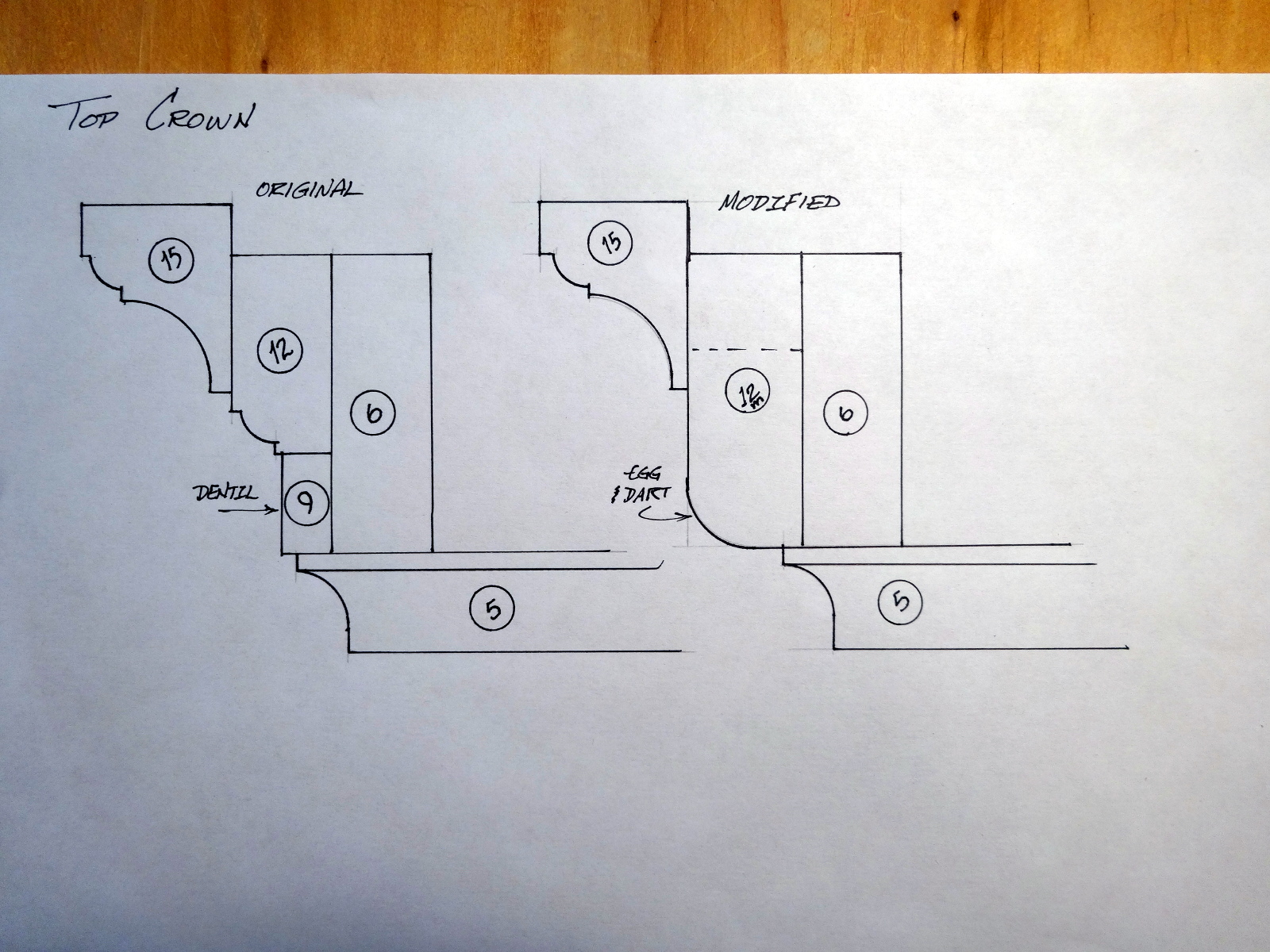
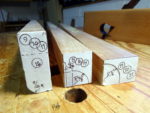
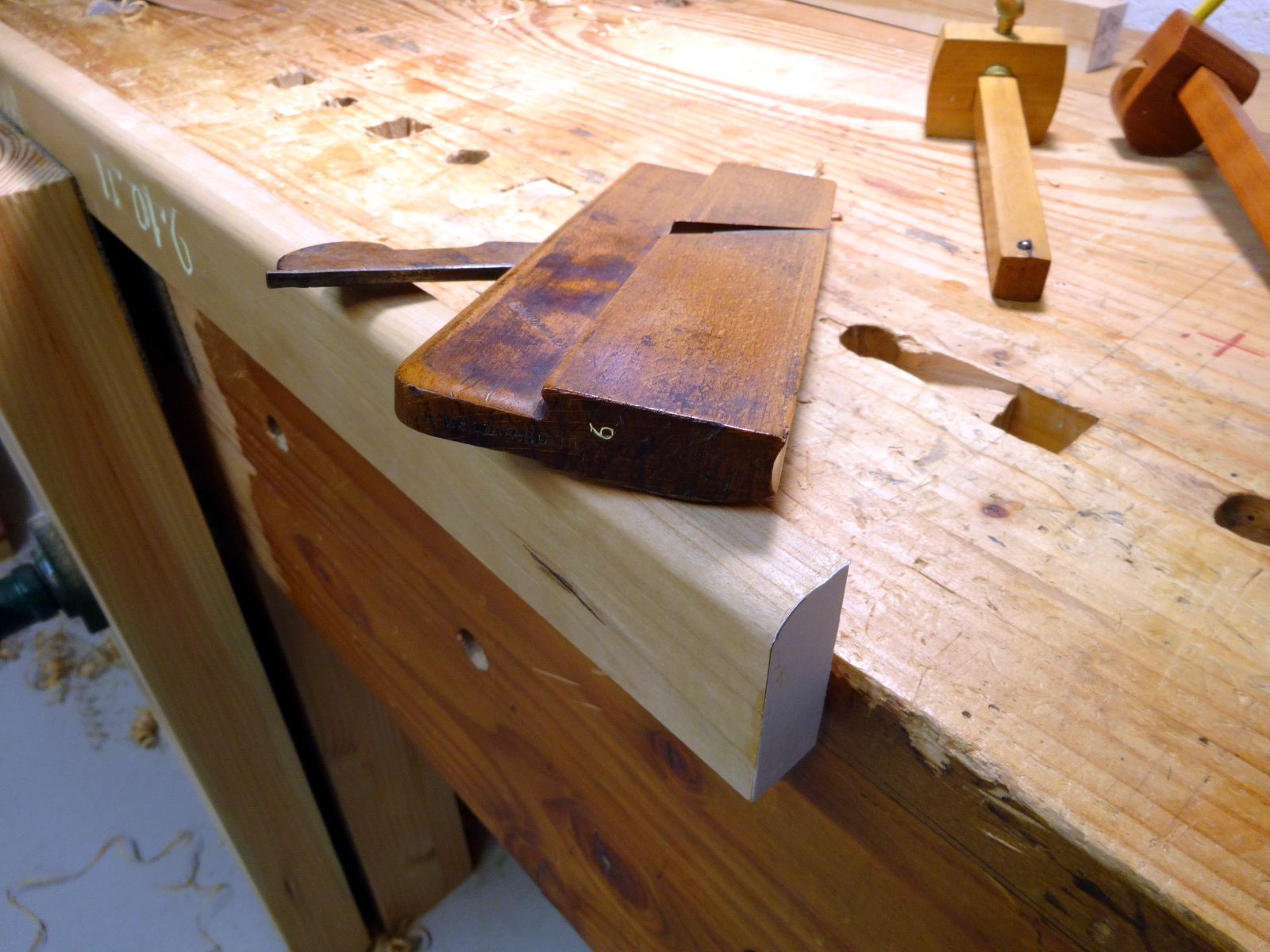
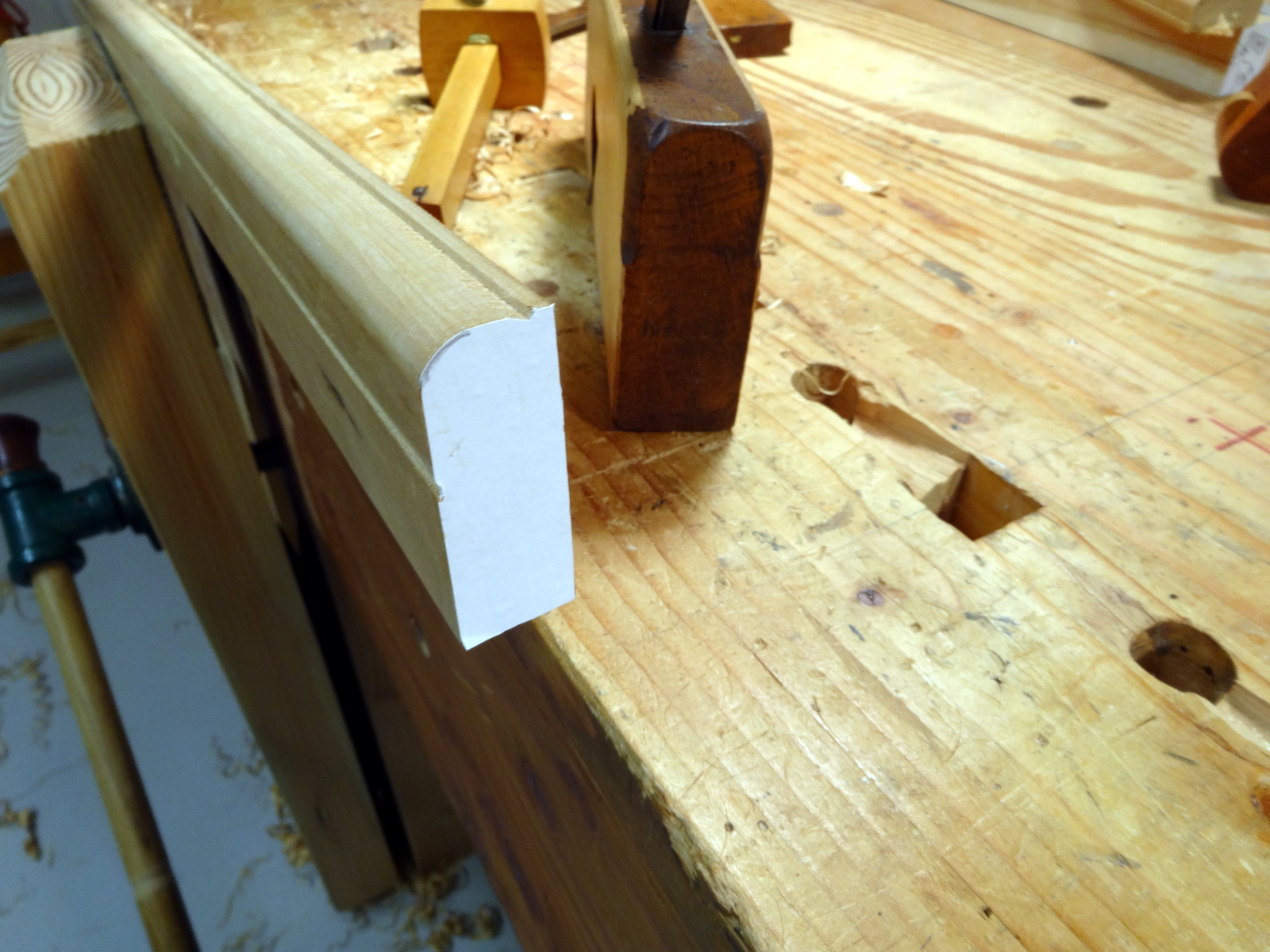
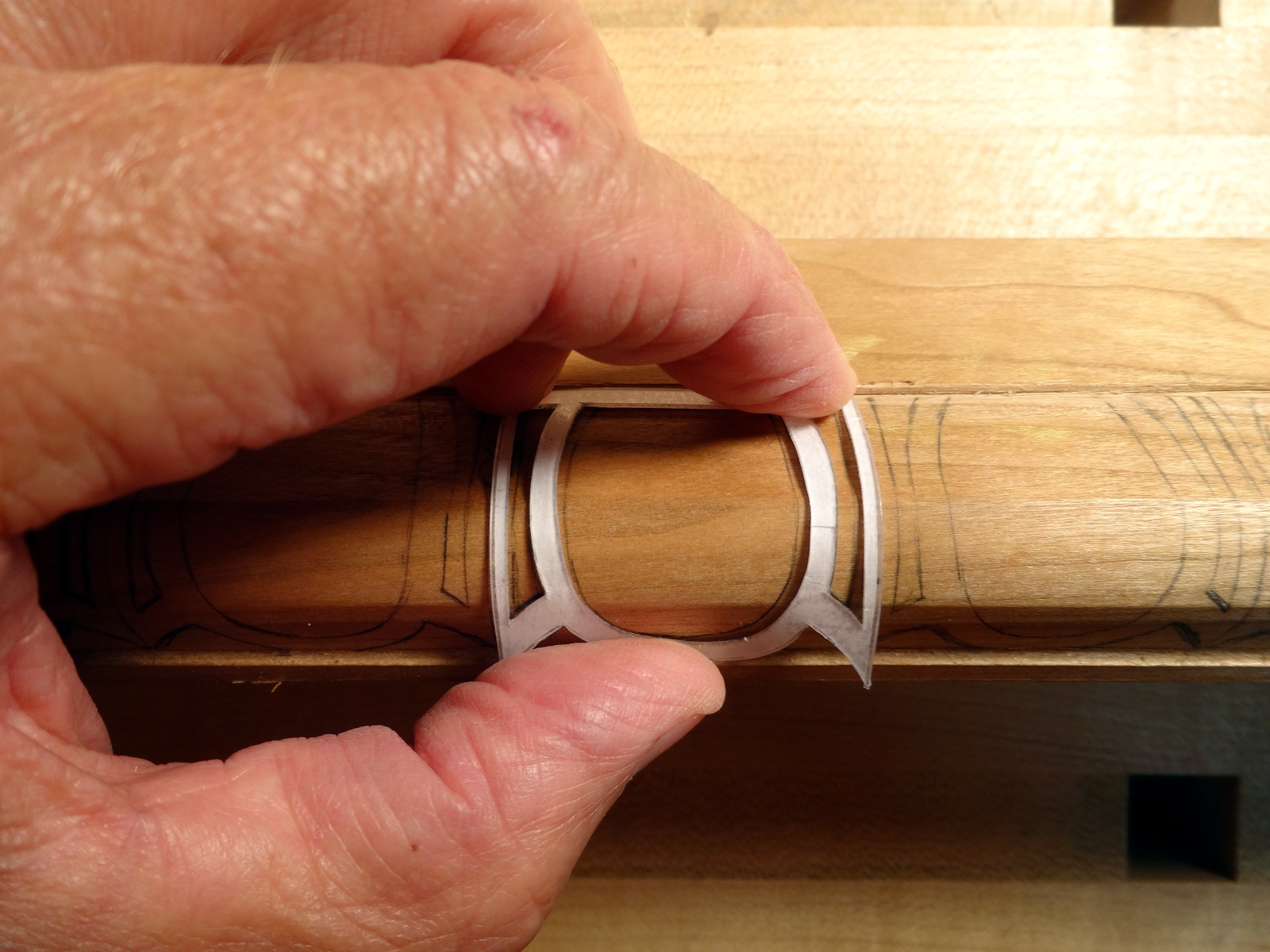
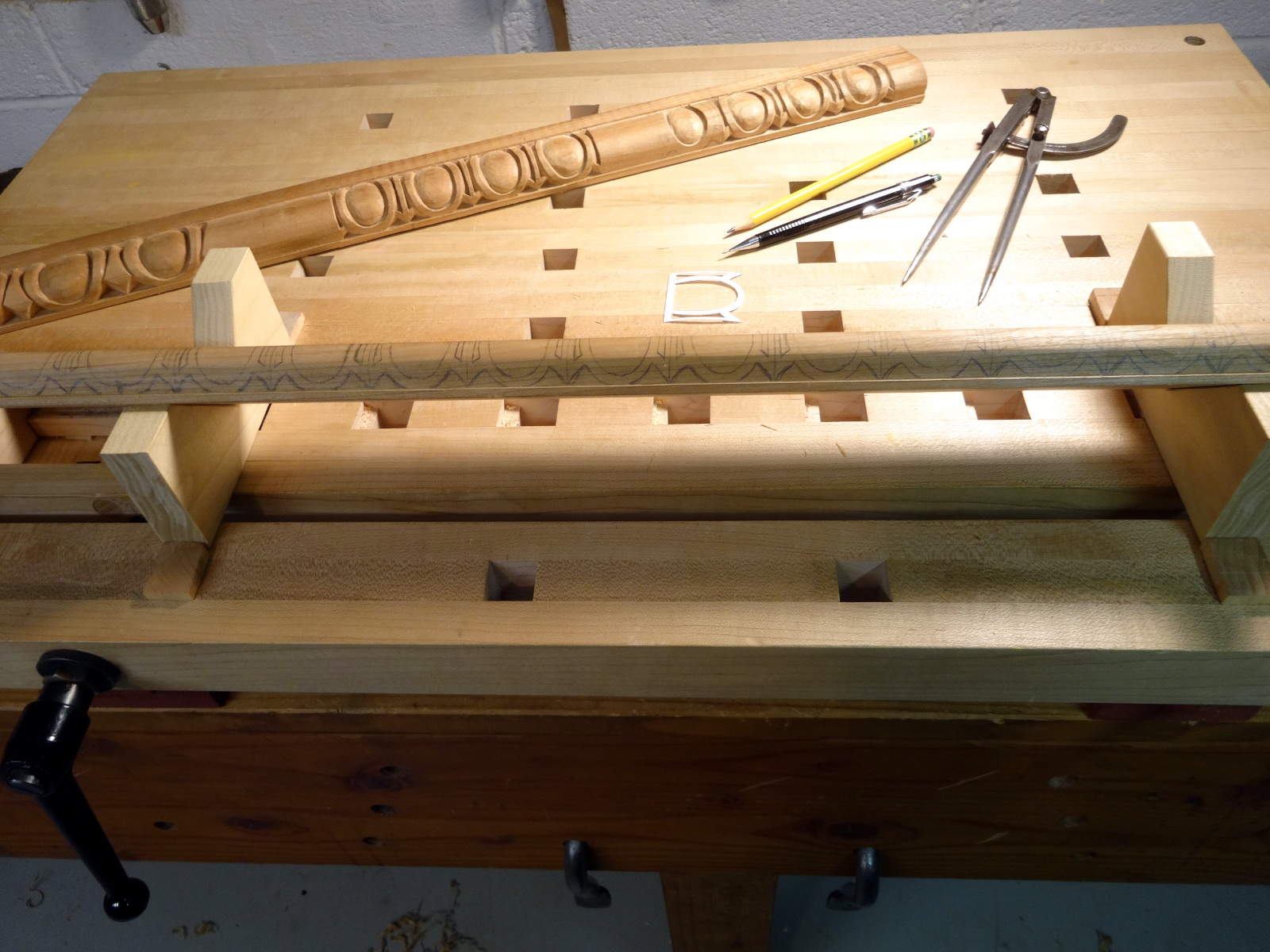
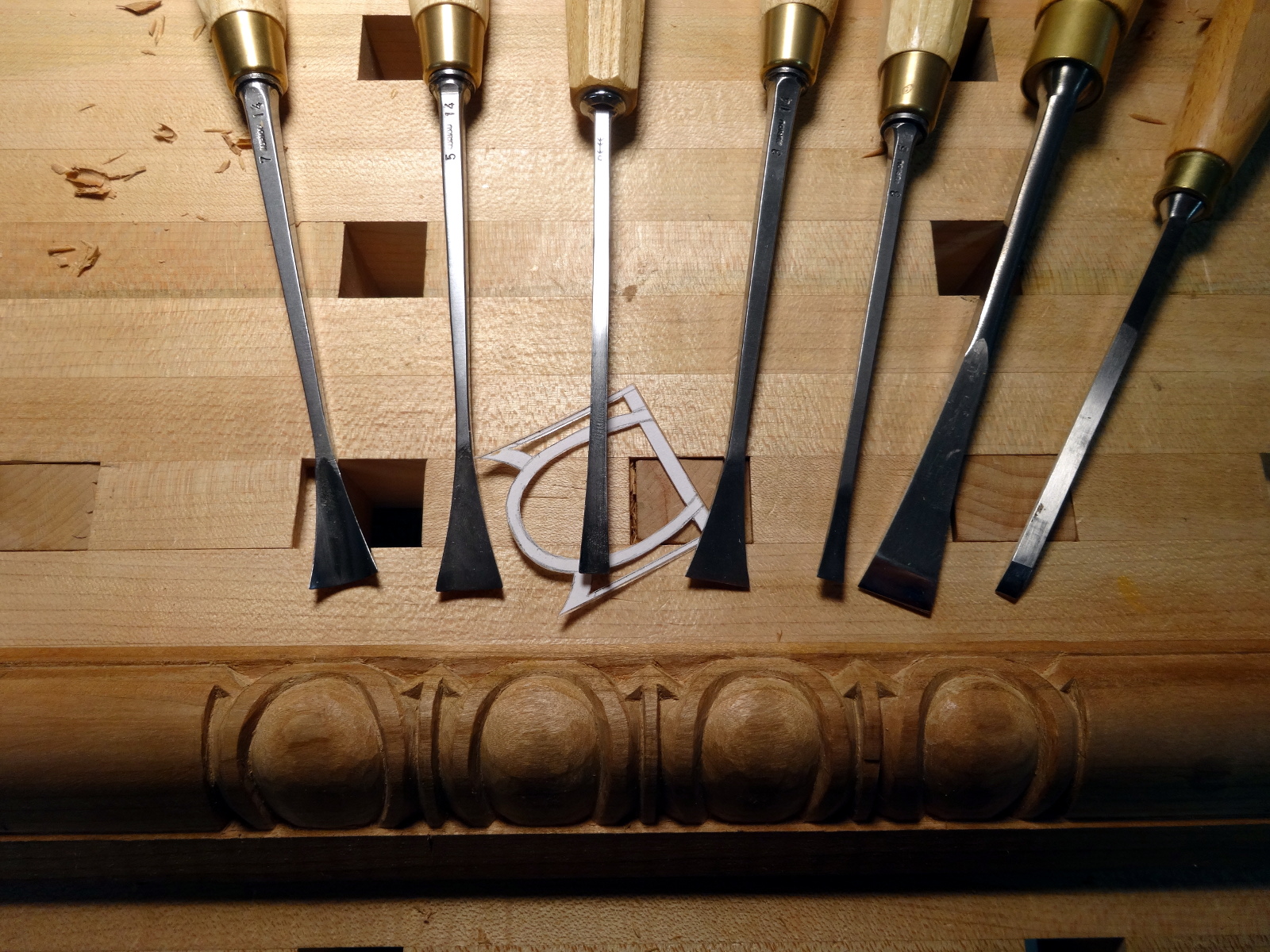
That’s going to look sharp, Bob. I like the egg and dart better than the dentils.
Thanks Derek.
Well Bob, if that’s a practice piece I can only anticipate the final clock will be amazing!
Thanks Antonio! It’s always fulfilling to be learning.
BTW, I haven’t found anything at your blog recently. Hope all is well with you.
Very interesting, Bob. I’ve been investigating moldings cut with H&R planes lately. Got Bickford’s DVD and have been practicing. I’m really looking forward to seeing how yours comes out.
Thanks Matt. Your mol(u)ding work is coming along nicely. You have learned well from Bickford’s teaching.
… and I have “a secret” about cutting coves that I’ll get to in an upcoming article. It’s most probably in Bickford’s teaching, but too subtle for me to get the first time around. more later.